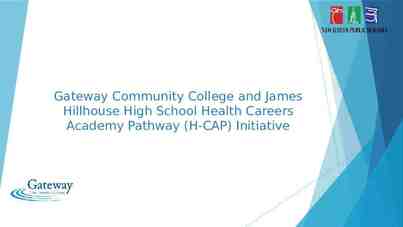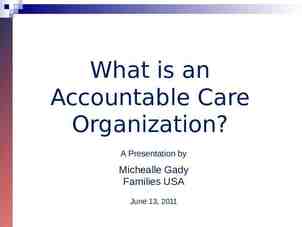R&D SDM 1 Software Process Improvement Capability Maturity Models
34 Slides386.50 KB
R&D SDM 1 Software Process Improvement Capability Maturity Models 2010 Theo Schouten 1
Content Process, product, people, quality What are maturity models? CMMI models Operational use of the CMMI People-CMM Book chapter 2: Process: A Generic View 7: chapter 30 new 2
Process and product quality A good process is usually required to produce a good product. Improvement of the process give benefits because the quality of the product depends on its development process. For industrial production, process is the principal quality determinant. For design-based activities, the capabilities of the designers are also an important factor 3
Principal product quality factors Dev elopment technology Process quality Product quality People quality Cost, time and schedule 4
Software Process Improvement stages Process measurement – Attributes of the current process are measured. These are a baseline for assessing improvements Process analysis – The current process is assessed and bottlenecks and weaknesses are identified Process change – Changes to the process that have been identified during the analysis are introduced 5
Elements of an SPI framework 6
What is a maturity model? ‘A maturity model is a model with which organizations can judge their (software engineering, hrm, service, etc.) process (including comparing it to other organizations) and based on this judgment can improve their process.’ – started in 1986 by the Software Engineering Institute (SEI) (Carnegie Mellon University) and the Mitre Corporation –SEI started with a Process Maturity Framework and a maturity questionnaire –the software Framework developed into the Capability Maturity Model (CMM) for Software (1991) –Revised maturity framework (CMMI) introduced in 2001 7
Process Maturity Framework Goal is the improvement of the software engineering process – Success should not be based on incidental individual achievements – Success should be based on repeatable and proven successful work methods Mature Software Organization Immature Software Organization No objective basis for judgment of product quality - No objective basis for improvement of product or process quality - Reviews and tests are often skipped when projects run behind schedule - Ad hoc management - Organization wide knowledge to manage software development, employment and improvement - Processes are ‘fit-for-use’ - Processes are being adapted to the situation -Tasks and responsibilities are clear for the project and anyone in the organization - 8
Software Process Software Process: ‘the whole of activities, methods, practices, communication and changes that people use in order to develop and maintain software and associated products (e.g. plans, design documents, code, test cases and user manuals)’ CMM gives an organization a way to get and improve control over the software process and provides it with a route to achieve excellence in software engineering 9
Fundamental concepts for Process Maturity Software Process Capability –How good it can predict the expected outcome of a next software project Software Process Performance –Actual results of a software project Software Process Maturity –The level in which a software process is explicitly defined, managed, measured and controlled in order to achieve results Software Process Institutionalization –The level in which the software process is institutionalized with respect to methods, standards and organizational structure 10
Levels of software maturity Maturity level: –A well defined level on the way to achieve an adult, a mature software process –A foundation for realizing continuous improvements –Every level contains a group of process goals that, when stable, form an important part of the software process –Every level leads to the improvement of the process capability of the organization 11
The staged CMMI model Level 5 Optimizing Level 4 Quantitatively managed Level 3 Defined Level 2 Managed Level 1 Initial 12
Initial (1) The software process can be described as ad-hoc, or even chaotic There are practically no processes defined Success depends on individual input and achievements The software process is not predictable regarding results Schedules, budget, functionality and product quality is not predictable Works disastrous in crises situations Can be successful in highly innovative environment (e.g. start of the web-design world) 13
Managed (2) The basic project management procedures are used Costs, schedules en functionality are ‘tracked’ Planning and managing of new projects are based on experience with comparable projects Needed process discipline is enforced such that earlier success can be repeated with building an comparable application Software requirements and work products are ‘baselined’ Disciplined environment in which planning and tracking are stable and thus previous successes can be repeated 14
Defined (3) Processes for management and software engineering are documented, standardized and integrated in a standard software development process All projects use an approved, adapted version of the standard software process for the development and maintenance of software Processes are used to let software managers and engineers be more effective There is a group responsible for the software process There is training in the software process The software process is stable and well defined and is able to operate more effectively 15
Quantitatively managed (4) Detailed metrics of the software processes and quality of products are gathered Quantitative goals are set for the software process and the product quality Use is made of a software process database in which the metrics are gathered and analyzed Projects have a control over the software process and product quality such that the can work in defined limits Risks of development in new technical environments are recognized and managed Software process is predictable and trends can be predicted 16
Optimizing (5) Continuously software process improvements are realized by quantitatively feedback of the process and by trying out of innovative ideas and technologies The whole organization is focused on continuous improvement Data regarding performance of the processes are used for costbenefit analyses Innovations that make use of the best software engineering practices are identified and spread over the whole organization Software project teams analyze errors in order to find out how to improve ‘Lessons learned’ are shared with other projects (team rooms, Communities of Practice) 17
Goal N-z Goal N-y Level 5: Optimizing Goal N-x Level 4: Quantitatively Managed Level 3: Defined Goal N a Goal N Chance Chance Chance Chance Chance Maturity level and changing predictability Time/Money/ Level 2: Managed Level 1: Initial 18
Operational use of CMM How do you determine in practice the maturity of an organization? Indicate Process Capability Maturity Level Contain Key Process Areas Achieve Organized by Goals Address Common Features Implementation or Institutionalization Describe Contain Key Practices Infrastructure or Activities 19
Key Process Areas Optimizing (5) -Process change management -Technology change management -Defect prevention Quantitatively Managed (4) Defined (3) Managed (2) Initial (1) -Software quality management -Quantitative process management -Peer reviews -Intergroup coordination -Software product engineering -Integrated software management -Training program -Organization process definition -Organization process focus -Software Configuration Management -Software Quality Assurance -Software Subcontract Management -Software project tracking & oversight -Software project planning -Requirements Management 20
Example Maturity Level 2 Managed Indicates Contains Disciplined Processes Key Process Area Software Project Planning Achieves Organized by Software estimates are documented for use in planning and tracking Address Activities Performed Common Feature Contain Key Practice Implementation Activity 9. Estimates for the size of the Describe software work products (or changes to it) are derived according to a documented procedure Activity 21
Continuous CMM model Project monitoring and control Supplier ag reement management Risk management Configuration management Requirements management erification V a Vlidation 1 2 3 4 5 A process capability profile 22
Remarks Maturity Models are helpful to indicate the maturity of a software organization The CMM(I) model is the most used Organizations ‘benchmark’ themselves to position them relative to others based on the CMM-level CMM-level should give an indication of the quality level of a software organization Specially “new” countries (India, China) qualify themselves strongly in this area It is not a “sacred cow” and it should be used prudently 23
Problems with CMM CMM is actually a management framework, with many details left out (a goal, not a method) – Example: “You must have peer reviews.” But how should the reviews be run? Being used just as stamp of approval – Just tell us what to do to get Level 2, so we can get back to work – Let’s work together to improve our software processes Doesn’t say anything about software! – CMM is a model for managing software projects Doesn’t help in a crisis Only for repetitive tasks 24
People- Capability Maturity Model (P-CMM) Improvement of the capabilities of the software organization by improvement of the skills of the individuals Assure that the ability in software development is an attribute of the organization and not of a number of individuals Keeping people with critical knowledge and skills in the organization Assure that the goals and direction of the individuals is the same as that of the organization 25
Provides A framework that focuses on improving management and development of human assets of an organization. Provides an improvement path Integrate workforce development with process improvement Characterize the maturity of their workforce practices 26
Trends Affecting the Workforce Pfeffer (1994) Doers differ from thinkers - Doers must be thinkers Assets are things - Assets are people Labor is an expense - People are an investment Lifetime employment - Lifetime employability Top down control - Decentralized decisions Localized work - Networked problems solved Measure for results - Measure for improvements 27
P-CMM Architecture 28
P-CMM levels and process areas 29
Process Area & Maturity Levels 30
Process Goals & Process Practice Process area goal is an organizational state to be achieved by implementing the practices of a process area. Process practice is a sub process within a process area that contributes to achieving a process area goal. 31
Implementation & Institutionalization Practices 32
Other SPI frameworks SPICE— a international initiative to support the International Standard ISO/IEC 15504 for (Software) Process Assessment [ISO08] Bootstrap—a SPI framework for small and medium sized organizations that conforms to SPICE [Boo06], PSP and TSP—individual and team specific SPI frameworks ([Hum97], [Hum00]) that focus on process in-the-small, a more rigorous approach to software development coupled with measurement TickIT—an auditing method [Tic05] that assesses an organization compliance to ISO Standard 9001:2000 33
SPI trends future SPI frameworks must become significantly more agile Rather than an organizational focus (that can take years to complete successfully), contemporary SPI efforts should focus on the project level To achieve meaningful results (even at the project level) in a short time frame, complex framework models may give way to simpler models. Rather than dozens of key practices and hundreds of supplementary practices, an agile SPI framework should emphasize only a few pivotal practices 34







































